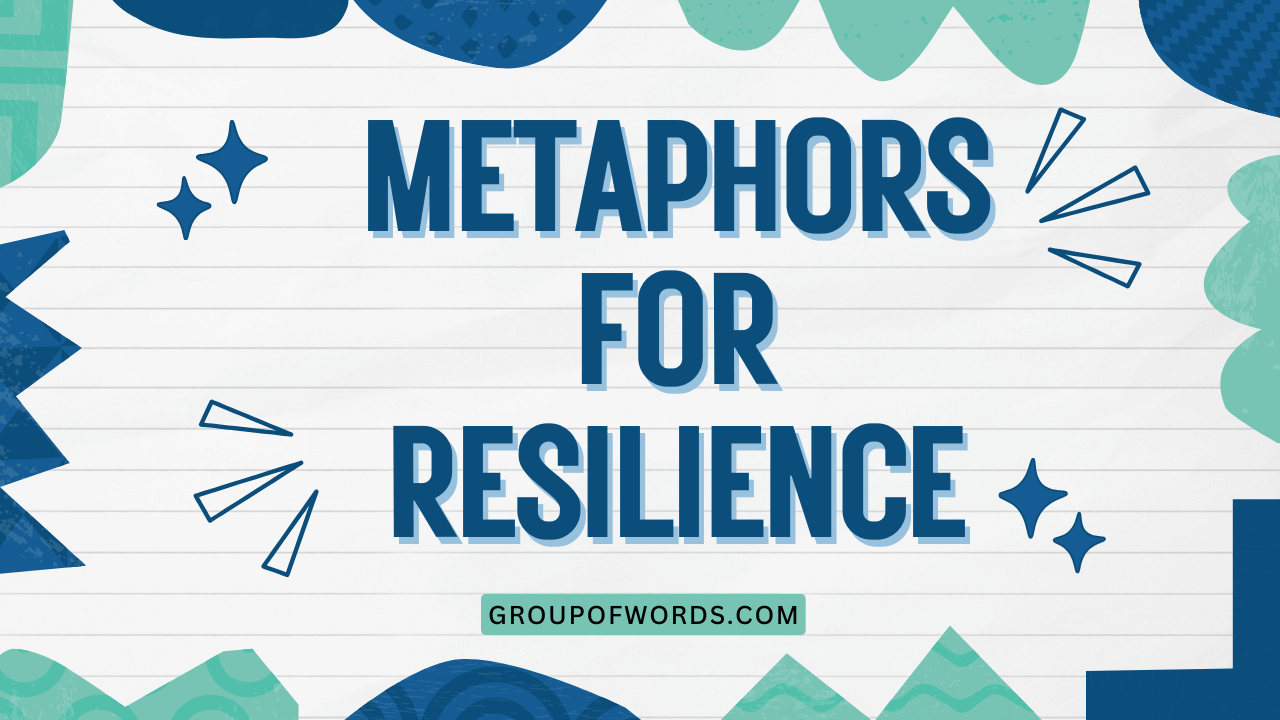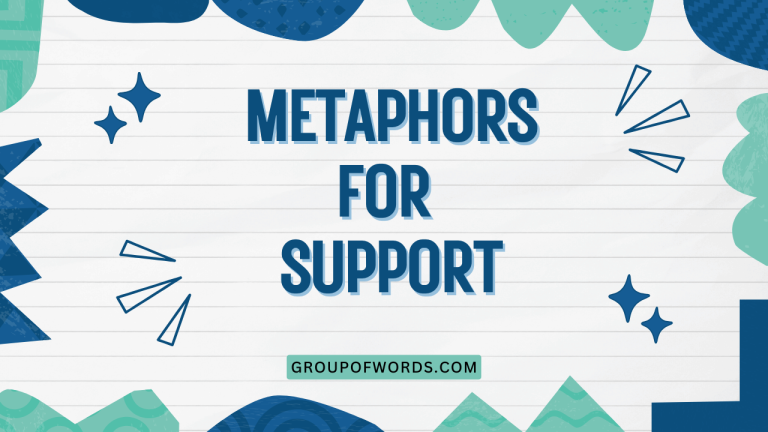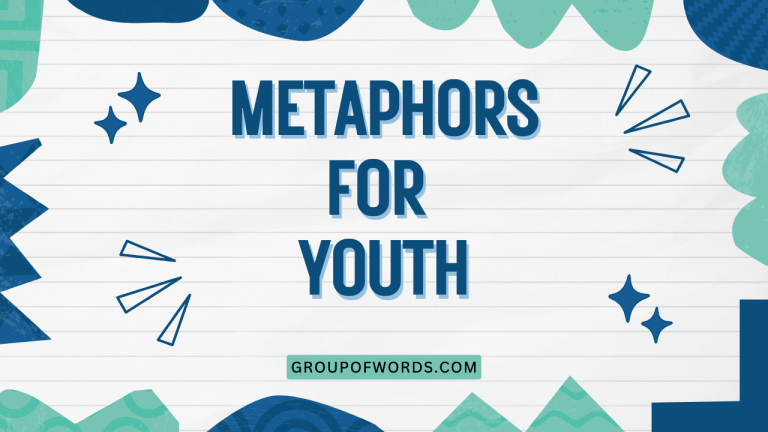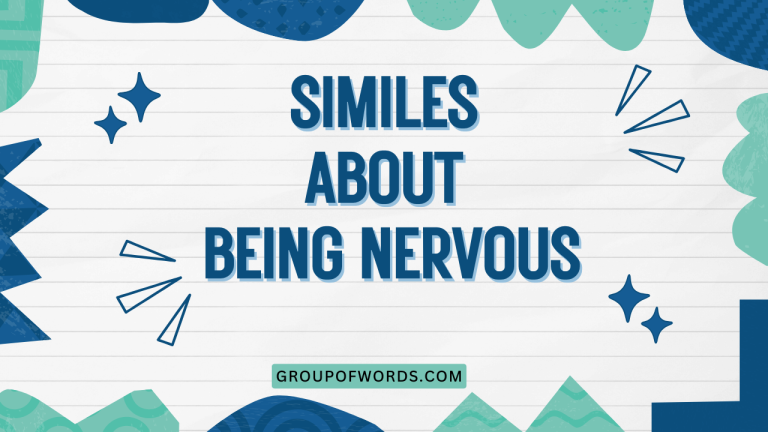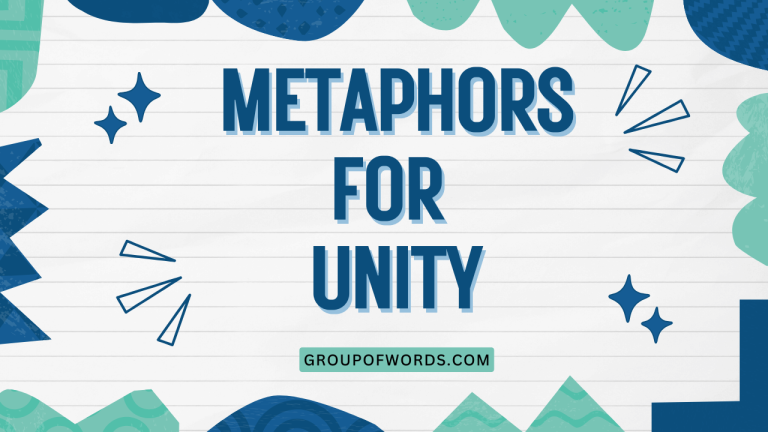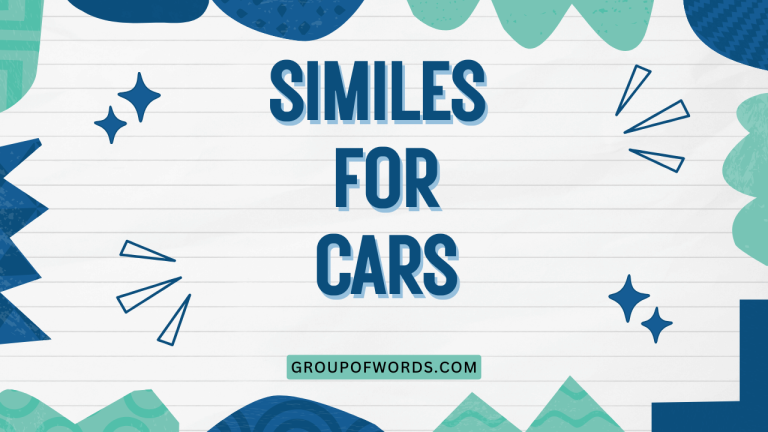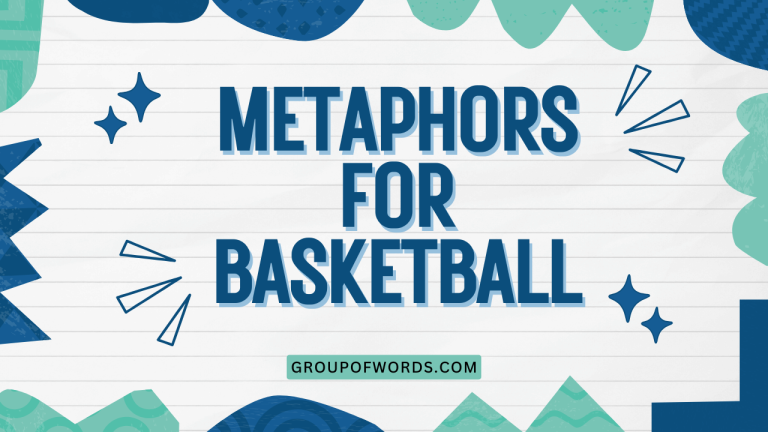Resilience in Language: Mastering Metaphors of Strength
Understanding metaphors for resilience is crucial for mastering figurative language and enhancing communication skills. Resilience, the ability to recover quickly from difficulties, is a concept often conveyed through vivid and powerful metaphors.
This article explores various types of resilience metaphors, offering detailed explanations, examples, and practice exercises. Whether you’re an ESL learner, a student of literature, or simply someone looking to enrich your vocabulary, this guide will provide you with a comprehensive understanding of how resilience is portrayed through metaphorical language.
By learning these metaphors, you’ll not only improve your English proficiency but also gain a deeper appreciation for the creative ways language can express complex ideas and emotions. This knowledge is particularly beneficial for academic writing, creative writing, and everyday conversations, allowing you to articulate your thoughts with greater precision and impact.
Table of Contents
- Definition of Metaphors for Resilience
- Structural Breakdown of Resilience Metaphors
- Types and Categories of Resilience Metaphors
- Examples of Resilience Metaphors
- Usage Rules for Resilience Metaphors
- Common Mistakes with Resilience Metaphors
- Practice Exercises
- Advanced Topics in Resilience Metaphors
- Frequently Asked Questions
- Conclusion
Definition of Metaphors for Resilience
A metaphor is a figure of speech that directly compares two unrelated things without using “like” or “as.” Metaphors for resilience use this comparison to illustrate the ability to bounce back from adversity. Instead of explicitly stating that someone is resilient, a metaphor implies it by associating the person or situation with something known for its strength, adaptability, or ability to recover.
In the context of resilience, metaphors often draw parallels between human experiences and elements found in nature, construction, or physical endurance. These metaphors serve to make the abstract concept of resilience more tangible and relatable.
They allow us to visualize and understand the qualities that contribute to overcoming challenges.
For example, saying someone is “a rock” implies they are stable and unyielding in the face of pressure, much like a literal rock withstands the elements. This metaphorical language highlights the person’s steadfastness and ability to remain strong during difficult times.
The function of these metaphors is to add depth and emotional resonance to descriptions of resilience.
Structural Breakdown of Resilience Metaphors
Resilience metaphors typically consist of two main components: the tenor and the vehicle. The tenor is the subject being described (the resilient person or situation), and the vehicle is the object or concept used to convey the metaphorical meaning (e.g., a tree, a bridge, or a flame).
The effectiveness of a resilience metaphor depends on the clarity and relevance of the connection between the tenor and the vehicle. The chosen vehicle should possess qualities that are readily associated with resilience, such as strength, flexibility, or the ability to recover from damage.
The relationship is implied, not explicitly stated.
Consider the metaphor “She is a phoenix rising from the ashes.” The tenor is “she” (the person), and the vehicle is “a phoenix.” The metaphorical meaning is that she is overcoming a devastating experience and emerging stronger, just as the mythical phoenix is reborn from ashes. The structure highlights the transformative aspect of resilience.
Here’s a breakdown of the structure:
- Tenor (Subject): The person or situation exhibiting resilience.
- Vehicle (Metaphorical Object): The object or concept used to represent resilience.
- Implied Connection: The shared qualities between the tenor and the vehicle that convey the meaning of resilience.
Types and Categories of Resilience Metaphors
Resilience metaphors can be categorized based on the source of the metaphorical vehicle. Common categories include nature-based metaphors, construction metaphors, physical strength metaphors, and metaphors related to weather or light.
Nature-Based Metaphors
Nature provides a rich source of metaphors for resilience, drawing on the ability of plants, animals, and natural phenomena to withstand harsh conditions and regenerate. Trees, rivers, and mountains are often used to symbolize strength, adaptability, and endurance.
For example, a tree that bends in the wind but does not break represents the ability to adapt to changing circumstances while maintaining core values. A river that carves its path through rock symbolizes perseverance and the power to overcome obstacles over time.
Nature-based metaphors emphasize the organic and enduring aspects of resilience.
Construction and Building Metaphors
Construction and building metaphors highlight the structural and foundational aspects of resilience. Bridges, walls, and sturdy buildings are used to represent the ability to withstand pressure and maintain stability.
These metaphors often emphasize the importance of having a strong foundation and robust support systems.
A bridge that withstands heavy traffic and strong currents symbolizes the ability to overcome challenges and connect different aspects of life. A solid wall represents the ability to protect oneself from harm and maintain boundaries.
These metaphors convey the idea that resilience can be built and reinforced over time.
Physical Strength Metaphors
Physical strength metaphors draw on images of physical prowess and endurance to represent resilience. These metaphors often involve comparisons to athletes, warriors, or other figures known for their physical and mental toughness.
They emphasize the importance of inner strength, determination, and the ability to push through pain and adversity.
For example, describing someone as having “an iron will” suggests they possess unwavering determination and the ability to overcome obstacles through sheer willpower. Comparing someone to a marathon runner highlights their ability to endure long-term challenges and maintain focus despite fatigue.
These metaphors convey the idea that resilience requires both physical and mental fortitude.
Weather-Related Metaphors
Weather metaphors use elements like storms, sunshine, and changing seasons to represent the ups and downs of life and the ability to weather difficult times. These metaphors often highlight the cyclical nature of challenges and the importance of finding strength and hope even in the darkest moments.
For instance, describing someone as “weathering the storm” suggests they are enduring a difficult period but will eventually emerge stronger. Comparing someone to a ray of sunshine conveys their ability to bring light and positivity to a challenging situation.
These metaphors emphasize the importance of perspective and the ability to find hope amidst adversity.
Light and Darkness Metaphors
Metaphors involving light and darkness often symbolize hope, clarity, and the ability to overcome adversity. Light frequently represents knowledge, understanding, and positive energy, while darkness symbolizes ignorance, fear, and despair.
Resilience is often portrayed as the ability to find light in the darkness or to emerge from the shadows into a brighter future.
Saying someone is “a beacon of hope” suggests they provide guidance and inspiration during difficult times. Describing someone as “illuminating a path forward” conveys their ability to find solutions and create opportunities in the face of challenges.
These metaphors emphasize the importance of maintaining a positive outlook and seeking out knowledge and understanding.
Examples of Resilience Metaphors
The following tables provide extensive examples of resilience metaphors, categorized by type. Each example illustrates how different metaphorical vehicles can be used to convey the concept of resilience.
Nature-Based Metaphors Examples
This table showcases examples of how elements from nature can be used metaphorically to represent resilience, highlighting qualities such as strength, adaptability, and enduring presence.
| Metaphor | Explanation |
|---|---|
| She is an oak, weathering every storm. | Like an oak tree that stands firm through storms, she remains strong and steadfast during difficult times. |
| He is a reed, bending but never breaking. | Like a reed that bends with the wind, he is flexible and adaptable, able to withstand pressure without being destroyed. |
| They are mountains, unyielding in the face of adversity. | Like mountains that stand firm against erosion, they are resilient and unwavering despite challenges. |
| The community is a forest, supporting each other through thick and thin. | Like a forest where trees support each other, the community provides mutual support and strength. |
| Her spirit is a river, constantly flowing and overcoming obstacles. | Like a river that carves its path through rock, her spirit is persistent and able to overcome challenges. |
| He’s a sunflower, always turning towards the light. | Like a sunflower, he always seeks positivity and hope, even in difficult situations. |
| She is like bamboo, strong yet flexible. | Bamboo’s ability to bend without breaking mirrors her adaptable and resilient nature. |
| He’s the roots of the family tree, providing stability. | Just as roots anchor a tree, he provides a strong foundation for his family. |
| The team is a beehive, buzzing with activity despite setbacks. | Like a busy beehive, the team remains productive and collaborative even when facing challenges. |
| She is the tide, always returning after being pushed back. | Just as the tide always returns, she consistently bounces back from setbacks. |
| He is a desert cactus, thriving in harsh conditions. | Like a cactus that thrives in the desert, he finds strength and resilience in difficult environments. |
| The organization is a coral reef, resilient and diverse. | Like a coral reef, the organization thrives due to its diversity and ability to adapt. |
| She’s a seed, growing stronger even after being buried. | Like a seed that grows after being buried, she emerges stronger from challenging experiences. |
| He is the North Star, a constant guide in dark times. | Like the North Star, he provides unwavering guidance and support during difficult times. |
| She is a willow tree, graceful and resilient. | Like a willow, she adapts gracefully to life’s challenges. |
| He’s a sturdy cliff, withstanding the waves of change. | Just as a cliff withstands waves, he remains steadfast amidst change. |
| The community is a fertile field, always ready to regrow. | Like a fertile field, the community is always ready to recover and flourish. |
| She’s a resilient vine, climbing higher despite obstacles. | Like a vine, she persistently overcomes obstacles to reach new heights. |
| He’s a deep well, always providing strength. | Just as a deep well provides water, he consistently offers strength and support. |
| She is a mountain stream, carving her own path. | Like a stream carving its path, she is determined to achieve her goals. |
| She is the roots of the family tree, providing stability and support. | Her role is essential for holding the family together, much like the strong roots of a tree. |
| He is a like a sturdy tree, weathering life’s storms without breaking. | His ability to withstand difficulties is similar to a tree’s strength during a storm. |
| They are like a dense forest, helping each other to grow and thrive together. | The group’s collaborative efforts mirror the way trees in a forest support each other’s growth. |
| Her spirit is like a flowing river, always finding a way around obstacles. | She continuously overcomes challenges, similar to a river finding its path. |
| He is like a sunflower, always turning towards the positive aspects of life. | His optimism is akin to a sunflower’s constant orientation towards sunlight. |
| She is like the resilient bamboo that bends but never breaks in strong winds. | Her adaptability is similar to bamboo’s ability to withstand harsh weather conditions. |
| He is like the roots of an old tree, providing unwavering support and stability. | His role in providing stability mirrors the function of a tree’s roots. |
Construction and Building Metaphors Examples
This table illustrates how metaphors related to construction and buildings can be used to represent resilience, emphasizing qualities such as strength, stability, and the ability to endure.
| Metaphor | Explanation |
|---|---|
| He is a bridge, connecting people and ideas. | Like a bridge that connects different places, he brings people together and facilitates communication. |
| She is a fortress, protecting her loved ones from harm. | Like a fortress that defends against attack, she shields her family from danger. |
| They are the foundation of the community, providing stability and support. | Like a foundation that supports a building, they provide essential support and stability to the community. |
| His spirit is a lighthouse, guiding others through dark times. | Like a lighthouse that guides ships, his spirit provides guidance and hope during difficult times. |
| She is a solid wall, standing strong against pressure. | Like a solid wall that withstands force, she remains firm and resilient in the face of pressure. |
| He has an iron will, an unbreakable structure. | His determination and strength of will are unwavering and unbreakable. |
| She built a career, brick by brick. | She has gradually and steadily constructed her career, demonstrating persistence. |
| He is the scaffolding that holds the team together. | He provides temporary but essential support to the team during challenging projects. |
| The company is a well-oiled machine, running smoothly despite challenges. | The company operates efficiently and effectively, even when facing obstacles. |
| She is a keystone, essential to the structure of the organization. | Her role is critical for maintaining the integrity and stability of the organization. |
| He is a solid pillar, supporting the entire family. | He provides unwavering support to his family, like a strong pillar. |
| She is a sturdy dam, holding back a flood of emotions. | She is able to control and manage her emotions effectively. |
| He is the bedrock of the community, providing a firm foundation. | He is a fundamental and stable presence in the community. |
| She is a resilient arch, distributing the weight of responsibilities. | She manages her responsibilities effectively, distributing the load evenly. |
| He is the blueprint for success, providing a clear plan. | He offers a well-defined and effective plan for achieving success. |
| She is a vault, protecting valuable assets. | She safeguards important resources and information. |
| He is a strong anchor, keeping the team grounded. | He provides stability and prevents the team from drifting. |
| She is a well-constructed building, designed to withstand anything. | She is strong and resilient, capable of handling any challenge. |
| He is a solid wall, protecting the company from failure. | He defends the company against potential setbacks. |
| She is a strong framework, holding the project together. | She provides the necessary structure and support for the project. |
| He is like a bridge, connecting different parts of the company seamlessly. | His role facilitates smooth communication and integration within the organization. |
| She is a fortress, protecting her team from external pressures. | Her leadership provides a safe and supportive environment for her team. |
| They are the foundation of the company, ensuring its long-term stability. | Their contributions are crucial for the company’s continued success and resilience. |
| His spirit is like a lighthouse, guiding the organization through difficult times. | His vision and leadership provide direction and hope during challenging periods. |
| She is like a solid wall, unyielding in the face of adversity. | Her strength and determination help her withstand any challenge. |
| He has an iron will, like a structure that can withstand any force. | His unwavering determination is his greatest strength. |
| She built her career meticulously, brick by brick. | Her gradual and careful approach to career development has ensured her success. |
Physical Strength Metaphors Examples
This table provides examples of metaphors that use physical strength and endurance to represent resilience, highlighting qualities such as determination, stamina, and the ability to persevere.
| Metaphor | Explanation |
|---|---|
| He is a warrior, fighting for what he believes in. | Like a warrior who battles for their cause, he is determined and courageous in pursuing his goals. |
| She has an iron will, never giving up despite challenges. | Her determination and resolve are unwavering, allowing her to overcome any obstacle. |
| They are marathon runners, enduring long-term challenges with perseverance. | Like marathon runners who complete a long race, they are able to sustain effort and overcome challenges over time. |
| His spirit is a flame, burning brightly despite setbacks. | Like a flame that continues to burn, his spirit remains strong and resilient despite challenges. |
| She is a powerhouse, full of energy and determination. | Like a powerhouse that generates energy, she is a source of strength and drive. |
| He’s a titan, shouldering immense responsibilities. | He carries heavy burdens with strength and resilience. |
| She’s a rock, providing unwavering support. | She offers stability and strength to those around her. |
| He’s a heavyweight champion, always ready for a fight. | He faces challenges head-on with courage and determination. |
| She’s a steel magnolia, delicate but incredibly strong. | She possesses both grace and inner strength. |
| He’s a human dynamo, constantly generating energy and ideas. | He is a source of innovation and enthusiasm. |
| She’s a tireless worker, never slowing down. | She consistently puts in effort and dedication. |
| He’s a force of nature, unstoppable in his pursuit of goals. | He relentlessly pursues his objectives with unwavering determination. |
| She’s a resilient spring, always bouncing back. | She consistently recovers quickly from setbacks. |
| He’s a steadfast anchor, holding firm in turbulent times. | He provides stability and support during difficult periods. |
| She’s a resilient shield, protecting her team from harm. | She defends her team against potential threats. |
| He’s a tireless engine, always pushing forward. | He consistently drives progress and innovation. |
| She’s a tenacious climber, never giving up on her ascent. | She persistently pursues her goals, overcoming obstacles. |
| He’s a resilient backbone, providing essential support. | He is a critical source of strength and stability. |
| She’s a steadfast compass, providing unwavering direction. | She offers consistent guidance and clarity. |
| He’s a resilient fortress, withstanding all attacks. | He remains strong and impenetrable in the face of adversity. |
| He is like a warrior, battling challenges with unwavering determination. | His perseverance and courage in facing challenges are akin to a warrior’s strength. |
| She has an iron will, like a steel beam that never bends. | Her resolve is unbreakable, similar to the strength of steel. |
| They are marathon runners, pacing themselves for the long journey ahead. | Their endurance and strategy mirror a marathon runner’s approach to a long race. |
| His spirit is like an unquenchable flame, burning brightly despite all obstacles. | His passion and determination remain strong, even when facing difficulties. |
| She is like a powerhouse, generating energy and driving progress forward. | Her influence and energy are a driving force for success. |
| He is like a titan, carrying the weight of responsibilities with ease. | His strength and capability allow him to handle significant burdens. |
| She is like a rock, providing unwavering support and stability. | Her reliability and strength are a source of comfort and security. |
Usage Rules for Resilience Metaphors
When using metaphors for resilience, it’s important to ensure that the comparison is clear, relevant, and appropriate for the context. The chosen vehicle should have qualities that are readily associated with resilience, and the metaphorical meaning should be easily understood by the audience.
Avoid mixed metaphors, which combine unrelated images and create confusion. For example, “He is a rock, navigating the stormy seas of life” mixes the image of a solid, unmoving rock with the dynamic image of navigating a sea, creating an inconsistent and confusing metaphor.
Consider the cultural context when using metaphors, as some images may have different connotations in different cultures. Ensure that the chosen metaphor resonates with the intended audience and does not unintentionally convey a different meaning.
Use metaphors sparingly and strategically to enhance your writing or speech. Overusing metaphors can make your language sound contrived and weaken their impact.
Choose metaphors that are fresh, original, and contribute meaningfully to the overall message.
Common Mistakes with Resilience Metaphors
One common mistake is using clichéd metaphors that have lost their impact through overuse. Examples include “rising from the ashes” and “weathering the storm.” While these metaphors are recognizable, they may not add significant depth or originality to your writing.
Another mistake is using metaphors that are too abstract or obscure, making it difficult for the audience to understand the intended meaning. The vehicle should be familiar and easily associated with the qualities of resilience.
The table below illustrates common mistakes and provides corrected examples:
| Incorrect | Correct | Explanation |
|---|---|---|
| He is a phoenix, running a marathon. | He is a marathon runner, enduring the long race. | Mixed metaphor: Combining unrelated images (phoenix and marathon runner). |
| She is weathering the storm, but she is also a brick wall. | She is weathering the storm and standing strong. | Clichéd and slightly mixed metaphor. Improved for clarity. |
| He is a cosmic enigma, resilient like a rubber band. | He is a resilient spring, always bouncing back. | Abstract and cliché. Replaced with a clearer, more direct metaphor. |
| She is an oak, navigating the river of life. | She is like a sturdy oak, weathering life’s storms. | Mixed and unclear metaphor. Clarified to focus on the oak’s strength. |
| He is a lighthouse, building bridges. | He is a lighthouse, guiding others through darkness. | Inconsistent imagery. Aligned metaphor to the guiding function. |
Practice Exercises
Test your understanding of resilience metaphors with the following exercises. Identify the type of metaphor used in each sentence and explain its meaning.
Then, try creating your own metaphors to describe resilience in different contexts.
Exercise 1: Identifying Metaphor Types
Identify the type of resilience metaphor used in each sentence (Nature, Construction, Physical Strength, Weather, Light).
| Question | Answer |
|---|---|
| 1. He is a lighthouse, guiding others through difficult times. | Construction |
| 2. She is a resilient spring, always bouncing back from setbacks. | Physical Strength |
| 3. They are weathering the storm, remaining strong despite the challenges. | Weather |
| 4. His spirit is a river, constantly flowing and overcoming obstacles. | Nature |
| 5. She is a beacon of hope, illuminating the path forward. | Light |
| 6. He is the bedrock of the community, providing unwavering support. | Construction |
| 7. She is like bamboo, bending but never breaking under pressure. | Nature |
| 8. He is a warrior, fighting for justice and equality. | Physical Strength |
| 9. They are emerging from the darkness, stepping into the light. | Light |
| 10. She is a solid wall, protecting her family from harm. | Construction |
Exercise 2: Creating Resilience Metaphors
Complete the following sentences by creating your own resilience metaphors.
| Question | Sample Answer |
|---|---|
| 1. Despite the setbacks, he remained ______. | a sturdy oak, weathering every storm. |
| 2. She faced the challenges with the strength of ______. | a bridge, connecting different paths. |
| 3. Their determination was like ______. | a flame, burning brightly in the darkness. |
| 4. The community supported each other, acting as ______. | a strong foundation, built to last. |
| 5. He emerged from the crisis, transformed like ______. | a phoenix rising from the ashes. |
| 6. The team’s resilience was like ______. | a well-oiled machine, running smoothly despite challenges. |
| 7. She is always there, a ______ for her friends. | solid rock, providing unwavering support. |
| 8. His spirit is ______, never giving up hope. | an unquenchable flame |
| 9. They faced the adversity, showing their strength like ______. | marathon runners enduring the long race. |
| 10. She is ______, always finding a way to bounce back. | a resilient spring |
Advanced Topics in Resilience Metaphors
For advanced learners, exploring the use of extended metaphors and allegories can provide a deeper understanding of resilience. An extended metaphor is a metaphor that is developed over several lines or paragraphs, creating a more complex and nuanced comparison.
An allegory is a story or narrative in which characters and events represent abstract ideas or moral qualities. Resilience can be explored through allegorical stories that depict characters facing challenges and overcoming adversity through their strength and determination.
Analyzing literary works that use resilience metaphors can also enhance your understanding of the topic. Look for examples of metaphorical language in novels, poems, and plays, and consider how these metaphors contribute to the overall meaning and impact of the work.
Frequently Asked Questions
Here are some frequently asked questions about metaphors for resilience:
- What is the difference between a metaphor and a simile?
A metaphor directly compares two unrelated things without using “like” or “as,” while a simile uses “like” or “as” to make a comparison. For example, “He is a rock” is a metaphor, while “He is like a rock” is a simile. Metaphors are generally considered more powerful and direct than similes.
- Why are metaphors useful in describing resilience?
Metaphors provide a vivid and relatable way to convey the abstract concept of resilience. By comparing resilience to tangible objects or concepts, metaphors make it easier to visualize and understand the qualities that contribute to overcoming challenges.
- How can I avoid using clichéd metaphors?
To avoid using clichéd metaphors, try to think of fresh and original images that capture the essence of resilience. Consider using metaphors from less common sources, such as science, technology, or art. Be creative and experiment with different comparisons to find metaphors that are unique and impactful.
- What are some common cultural differences to consider when using resilience metaphors?
Different cultures may have different associations with certain images or concepts. For example, the image of a bamboo tree may be particularly resonant in Asian cultures, while the image of an oak tree may be more familiar in Western cultures. Consider the cultural background of your audience and choose metaphors that are appropriate and meaningful for them.
- How can I improve my ability to create effective resilience metaphors?
To improve your ability to create effective resilience metaphors, practice observing the world around you and identifying qualities that are associated with resilience. Read widely and pay attention to how other writers use metaphorical language. Experiment with different comparisons and ask for feedback from others to refine your skills.
- Can metaphors for resilience be used in professional settings?
Yes, metaphors for resilience can be highly effective in professional settings, especially when discussing challenges, teamwork, and leadership. They can help to inspire and motivate others, as well as provide a common language for understanding and addressing difficult situations. However, it’s important to use metaphors judiciously and ensure that they are appropriate for the context and audience.
- How do extended metaphors enhance the concept of resilience?
Extended metaphors allow for a more detailed and nuanced exploration of resilience. By developing a metaphor over several lines or paragraphs, you can delve deeper into the qualities and characteristics that contribute to overcoming challenges. This can create a more powerful and memorable image in the reader’s mind.
- What role do resilience metaphors play in literature?
Resilience metaphors are frequently used in literature to explore themes of perseverance, courage, and the human spirit. They can add depth and emotional resonance to stories and poems, as well as provide insights into the characters’ inner struggles and triumphs. Analyzing resilience metaphors in literary works can enhance your understanding of both the literature and the concept of resilience itself.
Conclusion
Mastering metaphors for resilience is an invaluable skill for anyone seeking to enhance their communication and understanding of the English language. By understanding the different types of resilience metaphors, their structural components, and the rules governing their usage, you can effectively use these powerful figures of speech to convey complex ideas and emotions.
Remember to practice identifying and creating resilience metaphors in various contexts. Pay attention to the metaphors used by other writers and speakers, and experiment with different comparisons to find metaphors that are fresh, original, and meaningful.
With practice, you’ll be able to use resilience metaphors with confidence and skill.
By incorporating resilience metaphors into your vocabulary, you’ll not only improve your language proficiency but also gain a deeper appreciation for the creative ways language can express the human capacity to overcome adversity and thrive. Embrace the power of metaphorical language to communicate with greater clarity, impact, and emotional resonance.
